Radio versus Pandora. The Challenge Ahead, The Hype and Some Facts!
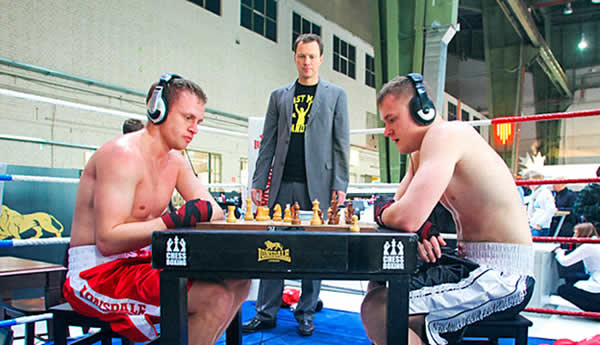
There is no doubt that Pandora is the biggest “radio” brand in the world today. That’s if you define Pandora as “radio.”
Over 80 million people worldwide can’t be wrong. Pandora is huge.
But are music streamers like Pandora and Spotify that much of a threat to ‘traditional’ broadcasters?
What can the streamers learn from radio?
What is going to win – art, creativity, old school programming by real people or math and algorithms?
(Traditional radio programming is of course a mix of both creativity and science)
![]() Pandora came into existence back in 2000, and didn’t launch in Australia & New Zealand until 2012. Commercial FM radio started here 35 years ago and AM 90 years ago.
Pandora came into existence back in 2000, and didn’t launch in Australia & New Zealand until 2012. Commercial FM radio started here 35 years ago and AM 90 years ago.
It may be unfair to compare Pandora and broadcast radio, however Pandora does describe itself as ‘ streaming radio ‘ or ‘ a personalised radio service ‘, no doubt positioning itself away from other music platforms and aggregators.
Both Pandora and FM/AM radio have different uses and somewhat different audiences, but since music platforms like Pandora have eroded some of broadcast radio’s younger demo’s it is worth making some comparisons.
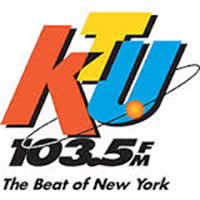 I spent the weekend listening to Pandora as well as KIIS Los Angeles and KTU New York via the iHeart App. I also listened to local stations like WSFM, NOVA and Triple M.
I spent the weekend listening to Pandora as well as KIIS Los Angeles and KTU New York via the iHeart App. I also listened to local stations like WSFM, NOVA and Triple M.
The exercise reminded me of how sterile Pandora is when you compare it to broadcast radio. Pandora lacked stationality and personality. It lacked any real human connection.
It had no music flow like well programmed radio stations and it sounded lifeless apart from a few ads, which were actually a welcome relief. Outside of the ads, it was like listening to my iTunes playlist . Pandora runs about a minute of ads per hour. Spotify runs ads between songs and recently Soundcloud have also started to run advertisements. Music platforms will more and more compete for radio advertising revenue in the future, that’s a given.
Not surprisingly most Pandora users listen to the version with ads rather than paying for the ad free one. Only a tiny percentage actually ‘ subscribe ‘.
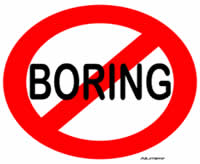 Pandora is a rapidly growing music service but it is boring compared to broadcast radio. And that’s one of radios key points of difference and competitive advantages.
Pandora is a rapidly growing music service but it is boring compared to broadcast radio. And that’s one of radios key points of difference and competitive advantages.
Radio in Australia is anything but boring. The competitive nature of breakfast and drive shows is evidence of that. In that regard Australian radio is ahead of the pack. Whether all of the big networks will be able to sustain the high cost required for big talent shows in the future is a question worth asking. It will probably eventually get down to there only being room for two big talent driven networks, not three. But for now listeners are the winners!
Back to my listening, Pandora didn’t offer any sense of companionship. It curates a good music selection from a ‘seed‘ song, very clever, but it didn’t keep me company. It didn’t engage me. It didn’t inform me. It didn’t entertain me.
Pandora is more like a jukebox than a radio station. Although to be fair, a lot of what has come out of iHeart Media in the US (formerly Clear Channel ) is just as “jukeboxy” at times !
Pandora’s numbers are impressive. Here in Australia they have been adding over 20,000 new users every week, now local users account for somewhere between 2 and 3 million.
So how does this compare to broadcast radio’s numbers ?
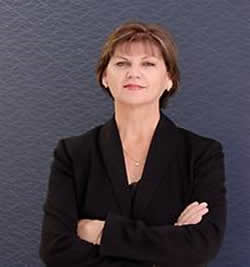 Joan Warner CEO of Commercial Radio Australia says “ approximately 21 million Australians listen to radio each week, 78% of the population uses commercial radio weekly and 77% of people listen to breakfast radio, that equates to nearly 18 million Australians every week. And 56% or 13 million people listen to commercial Breakfast radio on a weekly basis .“
Joan Warner CEO of Commercial Radio Australia says “ approximately 21 million Australians listen to radio each week, 78% of the population uses commercial radio weekly and 77% of people listen to breakfast radio, that equates to nearly 18 million Australians every week. And 56% or 13 million people listen to commercial Breakfast radio on a weekly basis .“
With Pandora now standard in new home entertainment systems, car listening will be the next battleground for Pandora versus radio. Pandora, Spotify etc are being integrated into car dashboards, just as radio has always been and now digital radio.
Jane Huxley Managing Director of Pandora recently said at the Australian Broadcast Digital Media Conference that “Pandora will be in 60% of cars in the future”.
She is right, however it will be a long time before the platforms reach critical mass in cars.
With new car sales at about 1 million a year here, it would take well over a decade to replace the roughly 18 million cars in Australia. Pandora’s now available in new cars from Holden, Mazda, Nissan, BMW and Ford.
Data costs are a big consideration for accessing these services, whereas FM/AM and digital radio are free.
Music streaming services use a lot of data when used via mobiles. Eventually internet enabled cars will change in car listening but high data usage will remain an issue. Using Pandora or Spotify in cars requires streaming through mobile phones and it’s too expensive for the average consumer.
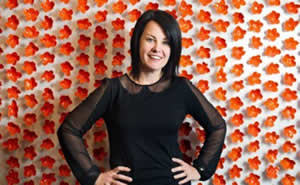 Jane also said that “over 86 per cent of Pandora listeners access via mobile and mostly on smart phones.”
Jane also said that “over 86 per cent of Pandora listeners access via mobile and mostly on smart phones.”
The average time spent listening to Pandora was 2 hours and 15 minutes per day, similar TSL to ‘traditional’ radio.
She quoted some Pandora fans as saying “Pandora knows me better than my wife. “
So the challenge for broadcast radio is to continue to develop its already sophisticated research to understand its audience even better, although radio has been using sophisticated, tried and tested research methodologies for a long time.
Whilst streaming services are creating new listening, they are also taking some market share from traditional music radio.So to remain competitive, broadcast radio will need to continue to offer a unique product, be talent focused and not rely only on music, something which Australian radio groups do well.Great, unique talent and shows will continue to be a key differentiator for radio.
Pandora and music platforms have a strong place in consumer’s media consumption, but listening to great radio stations provides so much more than just music.
 Stations like KTU, KROQ and KIIS package and promote the music they play, they enhance the music, ‘sell it’ and make it exciting and interesting.
Stations like KTU, KROQ and KIIS package and promote the music they play, they enhance the music, ‘sell it’ and make it exciting and interesting.
They are also extremely parochial about the markets they broadcast to, and ‘sell’ the cities they are in.
So localism will continue to be one of radios key benefits. Localization is an obstacle that streamers haven’t matched.
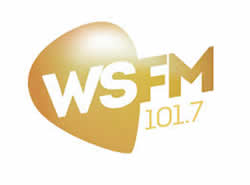 Local stations such as WSFM, Nova, Triple M have a strong sense of localism evident through their presentation, packaging, breakfast shows, announcers, promo’s, contesting and news.
Local stations such as WSFM, Nova, Triple M have a strong sense of localism evident through their presentation, packaging, breakfast shows, announcers, promo’s, contesting and news.
We all understand that it’s not just the music, but what happens in between the music that makes radio magic, interesting and exciting to listen to, and the major differentiator is the on air talent.
It’s interesting that iTunes radio is now doing “guest” hosting’s, similar to radio’s old Hour of Powers. For instance they recently featured Kate Perry ( PIC) playing her favorite songs for an hour. The shape of things to come?
Pandora has also started to run artist audio messages or artist ID’s just like radio stations.
Pandora, Spotify, Rdio, Deezer, Google Play and Grooveshark and the rest are currently more of a threat to the cd buying market than to FM/AM and Digital radio. They are not really much of a threat to broadcast radio as long as radio continues to invest in talent, get the programming right and entertain.
The weakness in “ free to air “ radio is arguably an inherent strength – the clutter !
Conversely, for Pandora and similar music services, their strength is a lack of clutter, very few ads and barely any production elements. However, in that strength is their weakness; they are fundamentally boring.
Pandora is more a background medium, radio is a foreground one. And that’s a big difference, especially when weighing up the value and effectiveness of commercials.
 It should be acknowledged that an advantage Pandora has over radio is its personalization and the ability to skip songs. It’s what we programmers have been doing forever; eliminating the “bad songs” utilizing music research.
It should be acknowledged that an advantage Pandora has over radio is its personalization and the ability to skip songs. It’s what we programmers have been doing forever; eliminating the “bad songs” utilizing music research.
Pandora does do this, but goes one step further – it lets each user decide for themselves what the “bad songs” are.
Radio listeners will usually avoid a ‘bad’ song by switching stations, especially in the car.
That said, radio programmers using sophisticated research can select the right songs for their target demo extremely well.
Pandora also cleverly includes an unheard of artist/song every 8-12 songs, which because of its ‘coding’ will sound familiar, similar to a radio stations ‘ prediction ‘ song each hour.
The old expression “Mainstream audiences know what they like, and like what they know” certainly applies when comparing streaming services versus broadcast radio.
Radio programmers still have a few tricks up their sleeve that streamers would find difficult to replicate, like not scheduling the same song in the same hour of breakfast the next day! Can streamers do that?
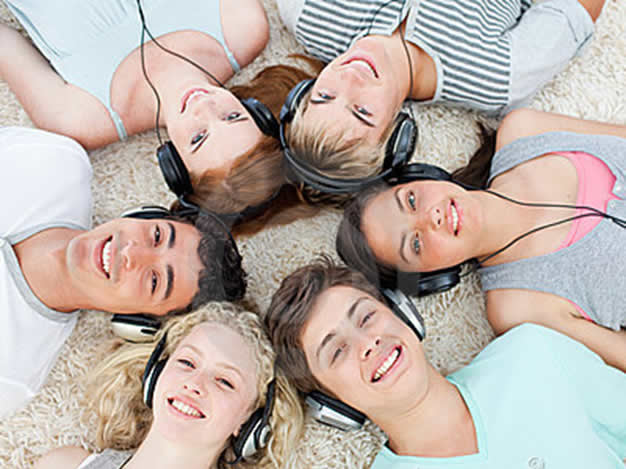 Probably my favourite feature on Pandora is giving a song the thumbs up or thumbs down, which allows Pandora to further personalise for you.
Probably my favourite feature on Pandora is giving a song the thumbs up or thumbs down, which allows Pandora to further personalise for you.
There is an entire generation of listeners who have now grown up with music platforms, so there’s the challenge for FM/AM radio, personalized ‘radio’ platforms versus compelling entertainment radio. Recent research found that teens (13-17 year olds) spend more time (64 mins) with streaming than with FM/AM radio (53 mins a day)
* source Edison Research Sept 2014
Over time Pandora’s challenge will be to continue to more and more replicate ‘ radio ‘ as we know it, utilising talent, production, promotions, information, news and the like.
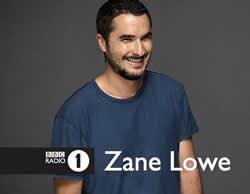 One of Pandora’s main competitors, Apples iTunes have recently announced that DJ Zane Lowe ( PIC ) left the BBC to join Apple. It could be another sign that music streaming and broadcast radio are converging. One of the first times a streaming platform has introduced one of the key elements it lacks, talent.
One of Pandora’s main competitors, Apples iTunes have recently announced that DJ Zane Lowe ( PIC ) left the BBC to join Apple. It could be another sign that music streaming and broadcast radio are converging. One of the first times a streaming platform has introduced one of the key elements it lacks, talent.
Remember, when XM and Sirius Satellite radio launched in the US back in 2002 it offered music channels only.
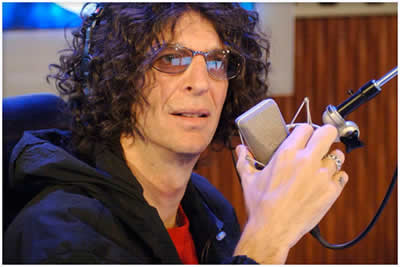 It was only when they added superstar talent like Howard Stern, (as well as sport content) that the service got real traction and subscriber numbers increased dramatically. Satellite radio now has the services of talent like Martha Stewart, Jimmy Buffet, Eminem, Bob Dylan, Opie and Anthony, Oprah Winfrey, Bubba The Love Sponge, Lance Armstrong and a host of others. So there are some similarities with the development of satellite radio and the music platforms.
It was only when they added superstar talent like Howard Stern, (as well as sport content) that the service got real traction and subscriber numbers increased dramatically. Satellite radio now has the services of talent like Martha Stewart, Jimmy Buffet, Eminem, Bob Dylan, Opie and Anthony, Oprah Winfrey, Bubba The Love Sponge, Lance Armstrong and a host of others. So there are some similarities with the development of satellite radio and the music platforms.
Radio is a lot more than music, and listening on the weekend yet again proved that to me. It’s background versus foreground!
The next stage for the music platforms is to be even more like successful radio stations, becoming entertainment platforms, offering content that’s unique and compelling.
There are also some similarities with Pandora and the early days of Top 40 AM radio and the start of FM radio. They also started out playing just music and went on to develop compelling breakfast, drive, night shows and personalities.
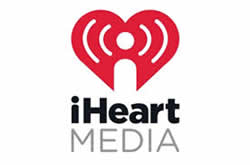 Pandora is a giant with a market cap of around $5 Billion. This compares to Australia’s largest radio group Southern Cross Austereo at around $780 million. Pandora though, is dwarfed by the biggest radio group in the world iHeart Media worth over $17 Billion, but Pandora’s catching up!
Pandora is a giant with a market cap of around $5 Billion. This compares to Australia’s largest radio group Southern Cross Austereo at around $780 million. Pandora though, is dwarfed by the biggest radio group in the world iHeart Media worth over $17 Billion, but Pandora’s catching up!
There’s plenty of room for both music platforms and broadcast radio. But it does seem that the music streamers can learn a lot from broadcast radio.
To stay relevant and compelling against the music platforms and streamers, radio in Australia has to remain a foreground medium.
And now back to my weekend , after a few hours I stuck with KIIS, KTU, WSFM & Nova and ditched Pandora for now.
Brad March is a Director of Radio Today and a former Group Program Director and CEO of Austereo. He is Director of Marchmedia.


